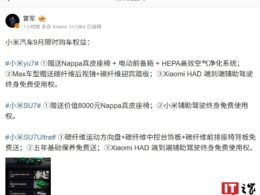AMD’s ROCm 7 Launch: A Game Changer in the AI Ecosystem
Summary
- NVIDIA maintains dominance in the AI market through advanced GPU performance and strong software infrastructure.
- AMD’s ROCm 7 release marks a significant step in competing with CUDA, boasting support for multiple frameworks and enhanced GPU capabilities.
- With performance improvements of up to 3.8 times, ROCm 7 aims to resolve existing developer issues and expand platform compatibility.
In the fiercely competitive landscape of artificial intelligence, NVIDIA has established itself as a leading force. Its success can be attributed not only to its powerful GPUs but also to the robust CUDA software ecosystem, which serves as an effective barrier to entry for competitors. However, rival company AMD is making significant strides to enhance its position in the AI ecosystem with the official release of ROCm 7.
Key Features of ROCm 7
AMD’s ROCm 7, released recently, serves as a critical countermeasure to NVIDIA’s CUDA. Positioned as an open-source solution, ROCm 7 is now available on GitHub, making it more accessible for developers and researchers looking to leverage its capabilities.
- Wide Hardware Support: ROCm 7 is designed to be compatible with AMD’s latest MI350X and MI355X graphics cards. This compatibility is crucial for anyone working with advanced neural networks and AI models.
- Framework Integration: The software supports a host of popular machine learning frameworks, including PyTorch 2.7, TensorFlow 2.19.1, ONNX 1.22, Triton 3.3, and JAX 0.6.0. This extensive library of supported frameworks allows developers to use ROCm 7 seamlessly across different platforms.
- Performance Enhancements: Early benchmarks indicate a remarkable performance boost across various models. For instance, the Llama 3.1 70B model saw an improvement of 3.2 times, while Qwen 2-72B’s performance improved by 3.4 times. Additionally, DeepSeek R1 achieved an astonishing performance improvement of 3.8 times, showcasing ROCm 7’s potential in accelerating AI workloads.
Performance Metrics
During a recent press conference, AMD detailed the enhancements provided by ROCm 7. The performance gains are notably impressive, especially in training tasks involving large language models like Llama 2 70B and Qwen 1.5 7B, which clocked in performance improvements of approximately three times. These gains indicate that ROCm 7 is not just a software update but a substantial leap forward in AMD’s capabilities to tackle AI-related challenges.
Future Enhancements and Ecosystem Growth
AMD remains committed to bolstering the ROCm ecosystem. Plans are already in place to further improve support this year, including:
- Support for Ryzen Workstations: Expanding ROCm’s compatibility to Ryzen platform notebooks and workstations will enhance its usability for a broader audience.
- Linux and Windows Compatibility: The official addition of Windows support is a welcome development for developers who previously faced limitations. As AMD continues to cater to both Linux and Windows users, it is addressing the main complaints that hindered adoption.
- Ongoing Ecological Improvement: AMD’s commitment to gradually resolving developer concerns indicates a determination to foster a thriving ecosystem built around ROCm. This ongoing focus on improvement is expected to attract a growing number of developers and researchers.
Conclusion
The release of ROCm 7 marks a pivotal moment in AMD’s journey to establish a foothold in the fast-evolving AI landscape. With its high-performance capabilities and robust support for major frameworks, ROCm 7 presents a compelling alternative to NVIDIA’s CUDA. As AMD continues to innovate and resolve existing issues, the competitive dynamics in the AI sector are bound to shift, opening doors for a fresh wave of developers and researchers eager to harness the power of AI.
In the coming years, the developments from AMD could significantly influence the AI ecosystem, making it a space to watch closely.






